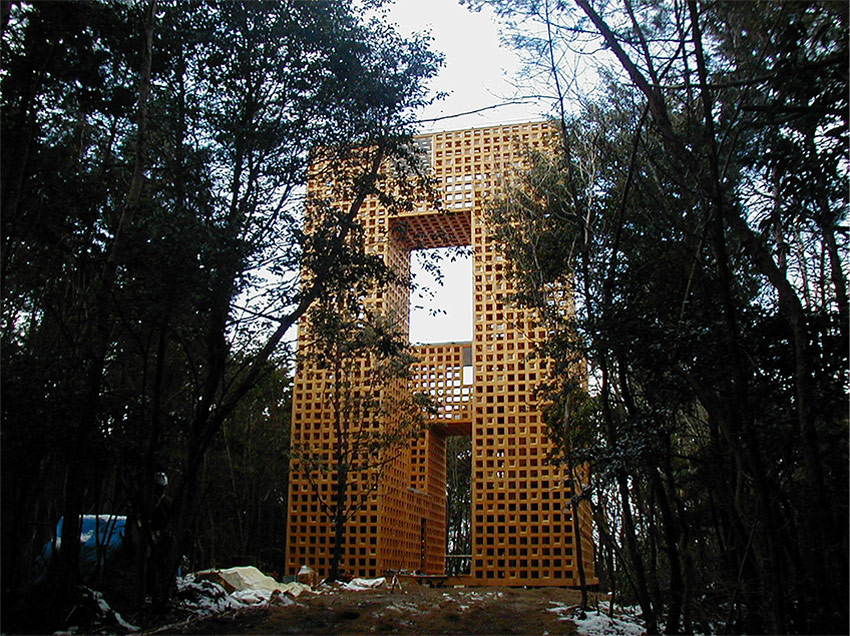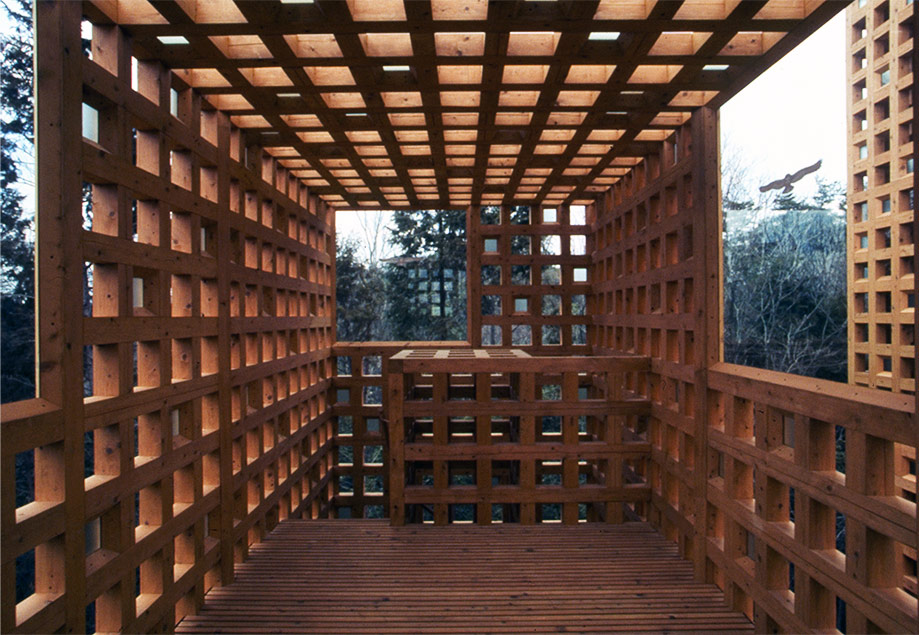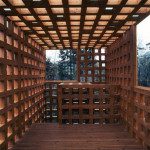The Kaisho Forest Viewpoint, completed in 2005 by the renowned Japanese architect Atsushi Kitagawara, is a testament to the harmonious integration of traditional Japanese woodworking techniques with contemporary architectural design. Situated in the serene eastern region of Seto-city, the structure is an innovative design and environmental stewardship, marking the entrance to the lush Kaisho forest.
Kaisho Forest Viewpoint technical information
- Architects: Atsushi Kitagawara
- Location: Seto-city, Aichi pref., Japan
- Topics: Wood
- Project Year: 2005
- Area: 2,500 m²
- Total floor area: 96.89m²
- Photographs: © Courtesy of Atsushi Kitagawara
Our principle challenge was to use exclusively the manpower to transport and assemble the building materials without machinery in order to reduce the environmental load.
– Atsushi Kitagawara
Kaisho Forest Viewpoint Photographs
A Harmonious Blend of Traditional Techniques and Modern Architecture
The highlight of this project is the “Mengoshi” technique, a local woodworking method skillfully adapted to meet modern demands, particularly in seismic resistance. The technique, deeply rooted in Japan’s rich architectural heritage, has been revitalized in this project, showcasing how historical methods can find relevance in contemporary structures.
The project’s location in Seto City is no coincidence. This area, known for its ecological and cultural significance, offers the perfect backdrop for a structure that aims to blend seamlessly with its natural surroundings. The design reflects a deep respect for the local environment, aiming to preserve the rare flora and fauna of the region while paying homage to the historical Satoyama landscapes.
The Kaisho Forest Viewpoint is built upon three fundamental themes: the practical use of thinning wood, the continuation of ancient wooden technology, and a commitment to environmental preservation. Each theme is meticulously woven into the fabric of the design, from the choice of materials to the construction techniques, creating a building that is as sustainable as it is aesthetically pleasing.
The “Mengoshi” technique, a central feature of this project, involves a hybrid lattice framework combining glass and wood. This unique construction not only enhances the building’s aesthetic appeal but also plays a crucial role in its structural integrity. The compressive strain of the 12mm thick glass against the wood significantly mitigates seismic forces, an essential feature for the 14-meter tall structure.
The construction of the Kaisho Forest Viewpoint was marked by a commitment to minimize environmental impact. This was achieved by relying on manpower rather than machinery for the transportation and assembly of materials. Such a choice posed significant logistical challenges but ultimately underscored the project’s dedication to environmental sustainability.
Every aspect of the Kaisho Forest Viewpoint, from its materials to its location, is designed to achieve a symbiotic relationship with its natural surroundings. The use of local thinning woods not only supports local industries but also ensures that the building complements its forested backdrop.
Since its completion, the Kaisho Forest Viewpoint has garnered attention both locally and internationally, serving as a shining example of how modern architecture can pay homage to traditional methods while promoting sustainability. Its innovative use of the “Mengoshi” technique has sparked interest in the potential of traditional methods in modern construction, inspiring architects and builders worldwide.
Kaisho Forest Viewpoint Gallery
- Construction: Takenaka Corporation + Suenaga-Seisakusyo








